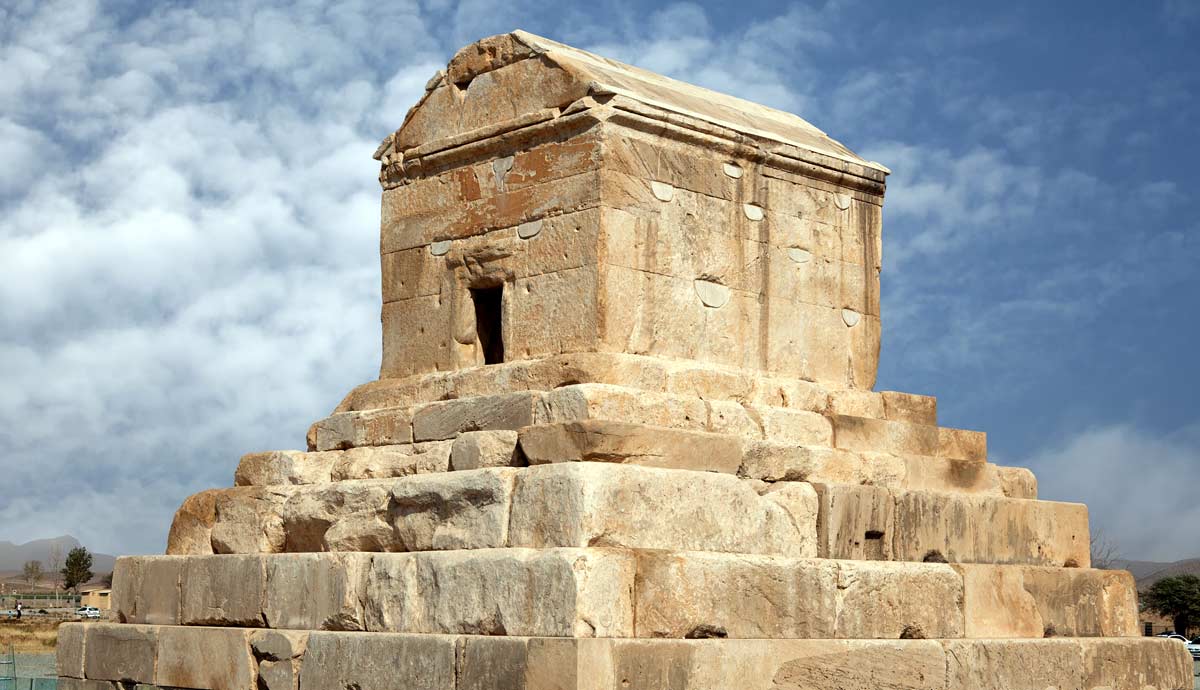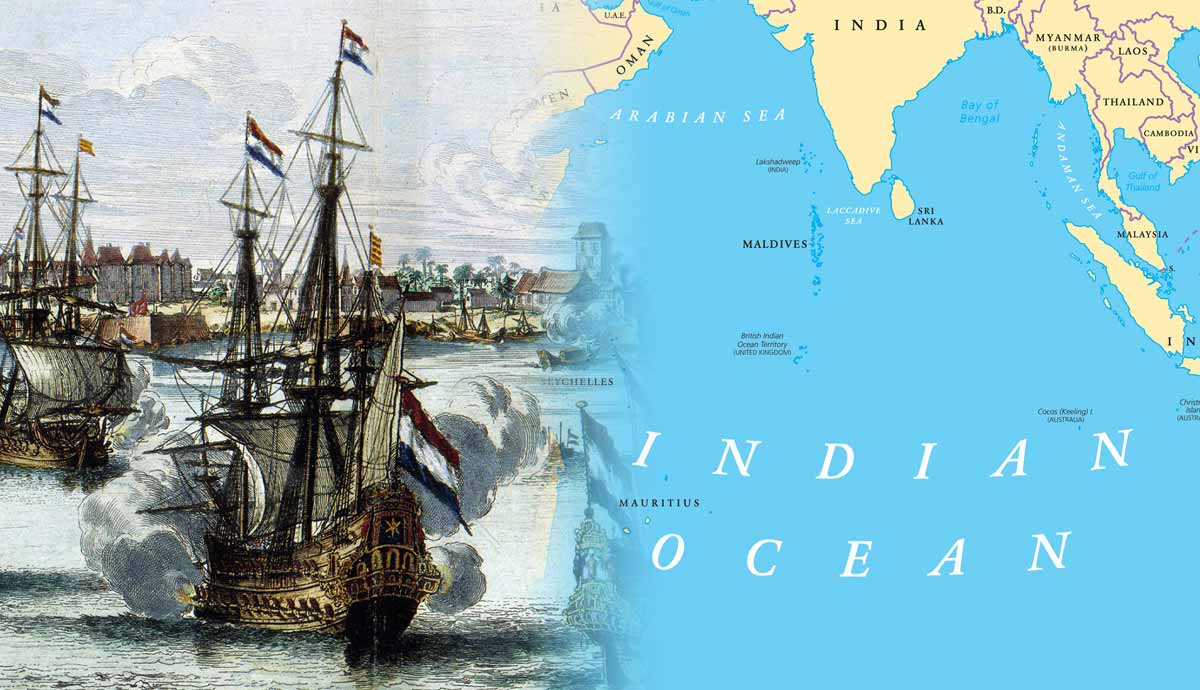
The Persian king Cyrus the Great (ruled 559-530 BCE) founded the Achaemenid Empire (550-330 BCE) and established Pasargadae as his capital. When Emperor Cyrus died, he was entombed there. His tomb was well tended until Alexander the Great (ruled 336-323 BCE) conquered Persia. Over the next millennium, Cyrus’ memory was gradually lost. The tomb was attributed instead to the Mother of Solomon and converted into a mosque, serving as a place of female pilgrimage. Later, the tomb was reattributed to Cyrus and is now a national monument.
Who Was Cyrus the Great?

Cyrus the Great was born in Anshan, Persia, at the start of the 6th century BCE to the Persian king Cambyses I and Queen Mandane of Media. Although terse, the Babylonian Nabonidus Chronicle (c. 500 BCE) outlines Cyrus the Great’s reign. After Cyrus the Great became king of Persia, the Median king Astyages (ruled 585-550 BCE) attacked him in the hope of conquering Persian territory. Cyrus the Great defeated King Astyages, sacked his capital, and carried off the spoils to Anshan (Nabonidus Chronicle 2.1-4).
Cyrus the Great later replaced the former capital, Anshan, with a new one at Pasargadae, which was also in Persia. According to the Greek historian Strabo in his Geographica (c. 1st century CE), Cyrus favored Pasargadae as it was the location where he defeated Astyages (Strabo 15.3.8). Following Cyrus the Great’s victory over the Medes, he conquered many lands, including the kingdom of Lydia and the Neo-Babylonian Empire (Nabonidus Chronicle 2.10-18, 3.1-28). Stretching from the Indus River to the Mediterranean Sea, Cyrus the Great’s Achaemenid Empire was now the largest the world had yet seen.
Cyrus the Great was also renowned for his beneficence towards his subjects and their religions. According to the contemporaneous Babylonian Cyrus Cylinder, Cyrus the Great rebuilt temples in the Mesopotamian region that had fallen into disrepair under the occupation of the Neo-Babylonian Empire. He also returned the statues of gods, which the Babylonians had earlier seized, to their original sanctuaries (Cyrus Cylinder 30-34).
According to the Hebrew Bible, Cyrus the Great likewise allowed the Jews held in Babylon to return to Jerusalem and rebuild their temple. Additionally, he returned to them the treasures which had previously been taken by Babylon (Ezra 1:2-8). For his magnanimity, Cyrus the Great is described in the Bible as a messiah (Isaiah 45:1).
Tomb of Cyrus the Great

When Cyrus the Great died in 530 BCE, succeeded by his son Emperor Cambyses II (ruled 530-522 BCE), he was entombed in Pasargadae. The tomb was constructed in sand-colored limestone with six steps ascending to a chamber shaped like a small house and topped with a sloping triangular roof. Strabo writes that it was located inside a park, in a thicket of trees (Strabo 15.3.7).
The Greek historian Arrian also described the tomb in his 2nd-century CE book, Anabasis of Alexander. Both Strabo and Arrian based their accounts on that of Aristobulus of Cassandreia, a 4th-century BCE Greek historian whose work is now lost. Arrian elaborates, writing that the park in which Cyrus the Great’s tomb was located also contained running streams and a grassy meadow. The tomb’s entrance was so narrow it was difficult for even a small man to squeeze through into the chamber (Arrian 6.29).
Past its narrow entrance and inside the tomb was Cyrus the Great’s golden coffin, which was covered in cloth and a Babylonian rug. There was also a couch with gold feet, a table bearing cups, and an array of gem-encrusted garments, jewelry, and swords. The tomb was protected and cared for by well-provisioned priests who lived in a small building on the approach to the tomb. Once a month, they sacrificed a horse to Cyrus the Great (Arrian 6.29, Strabo 15.3.7).
Arrival of Alexander the Great

Aristobulus of Cassandreia only saw the tomb of Cyrus the Great because he accompanied the Macedonian emperor Alexander the Great on his wide-ranging conquests. Alexander inherited the ancient kingdom of Macedonia, located in modern Greece, from his father, Philip II of Macedon (ruled 359-336 BCE). Through a series of brilliant campaigns, Alexander the Great conquered the Achaemenid Empire and defeated its final emperor, Darius III (ruled 336-330 BCE).
Aristobulus of Cassandreia first visited Pasargadae as Alexander headed east in his conquest of Persia, seeing the tomb and its environs as described above. After Alexander’s Indian campaign, they returned to Pasargadae. The defeat of the Achaemenid Empire resulted in political unrest in Persia, which Alexander’s appointees had difficulty stamping out (Arrian 6.29).
It was in this climate that the tomb was robbed of its portable items, leaving only the couch and coffin. The couch and coffin were both damaged, with the corpse of Cyrus the Great having been thrown out of the coffin and desecrated. Alexander tasked Aristobulus of Cassandreia with repairing the tomb. Aristobulus returned what remained of Cyrus’s body to his coffin and replaced the lid. He also mended the couch, procured identical items to those that had been stolen, and sealed off the tomb with stone and plaster (Arrian 6.29).
Bathsheba Mother of Solomon

The repair of the tomb of Cyrus the Great did not presage another illustrious era for Pasargadae. Although other cities took precedence over Pasargadae as capitals during the Achaemenid Empire, Pasargadae had remained an important location. Following Alexander’s conquest of Persia, this ceremonial importance also declined. After Alexander died, the Macedonian Empire was fought over by his successors, and Persia was eventually ruled by the Seleucid Empire. Pasargadae was not a Seleucid capital, nor was it a capital of any of the subsequent empires. The city slowly decayed, and even the memory of Cyrus the Great was gradually lost.
By the early Islamic era, Cyrus the Great’s tomb was known by another name. The 12th-century Persian historian Ibn al-Balkhi wrote in his Fars-Nama about the tomb; however, he called it the tomb of Solomon’s Mother. He described it as a stone building with four sides situated near a meadow. Ibn al-Balkhi also claimed that anyone who entered the mausoleum would be cursed with blindness, so no one tried (Ibn al-Balkhi 154-155). The Mother of Solomon he referred to was Bathsheba, the mother of the 10th-century BCE Israelite prophet and king.
According to the Quran, King Solomon could control the jinn, supernatural beings created from smokeless fire, and he compelled them to build shrines and various religious items, such as those at Pasargadae (Quran 34:12-13, 55:14). Pasargadae was not the only city in Persia to be reattributed to Solomon. Near Pasargadae was the ruined city of Persepolis, whose remnants dated back to the Achaemenid emperor Darius the Great (ruled 522-486 BCE). The Arab geographer Ibn Hawqal wrote in his 10th-century Surat Al-Ard that these were the ruins of a temple of Solomon that had been built by jinn (Hawqal 128-129). In this manner, these two fabulous ancient Persian capitals of the Achaemenids were attributed to Solomon and his jinn, thus transforming the landscape into a former dominion of Solomon.
Tomb Becomes Mosque

Although Ibn al-Balkhi wrote that the tomb was thought of as inaccessible, this soon changed. In his Travels to Tana and Persia, the 15th-century Venetian diplomat Giosafat Barbaro describes “a litle churche” being located atop the tomb, with Arabic writing inside (Barbaro 81).
Giosafat Barbaro was not describing a church but a mosque. This mosque was located inside the chamber that once held Cyrus the Great’s body. A mihrab, or wall niche denoting in which direction to pray, is carved inside the tomb. The mihrab and further inscriptions at the site of Pasargadae are dated to the reign of the Salghurid ruler Sa’d I ibn Zangi (ruled 1198-1226).
The German diplomat Johan Albrecht de Mandelslo, in his 1647 Travels, noted that the ruins of great pillars surrounded the tomb (Mandelslo 1.2). Although these pillars were Achaemenid in origin, this was not their original location. Rather, Sa’d I ibn Zangi had moved them from their initial placements and utilized them in the construction of a larger mosque surrounding the tomb.
One title of the Salghurids was “heir of Solomon’s dominion,” as inscribed by Sa’d I ibn Zangi on the lintel of the entry to the exterior mosque. Although grandiose for a small, subordinate dynasty, this title nevertheless demonstrates the importance with which they viewed Solomon and his supposed legacy in Persia. Additionally, Sa’d I ibn Zangi made the site a center for Islamic prayer with the construction of interior and exterior mosques.
Wallada bint al-Abbas

By the time Johan Albrecht de Mandelslo visited Pasargadae, only remnants of the exterior mosque remained. However, the “little Chappel,” meaning the interior mosque, continued to be used, and the villagers still attributed the tomb to Bathsheba. The village itself was called “Mashhad e Madar e Soleiman” or “Tomb of the Mother of Solomon.” However, Johan Albrecht de Mendelslo suggested an alternative Solomon. According to Christian missionaries, the tomb belonged to the mother of the Umayyad ruler Sulayman ibn Abd al-Malik (ruled 715-717 CE). Her name was Wallada bint al-Abbas (Mandelslo 1.2).
As Sulayman ibn Abd al-Malik’s capital was Damascus, in contemporary Syria, it is highly improbable that Wallada bint al-Abbas would have been entombed in Pasargadae. More likely, this new attribution to Wallada bint al-Abbas represented an early foreign attempt to provide a more historical explanation for the importance of the site. The locals, however, considered the tomb to be Bathsheba’s and likely believed Solomon had ordered the jinn to construct this sepulcher for his mother.
Pilgrimage Site

In addition to the tomb being an important location for villagers, people throughout the region would journey to the mausoleum for religious purposes. According to the French author André Daulier Deslandes in his Les Beautés de la Perse (1673), people would travel to Pasargadae for the Islamic holiday of Eid al-Adha (Deslandes 73). Eid al-Adha commemorates the Hebrew patriarch Abraham and his obedience to God, exemplified by his willingness to sacrifice his son Ishmael. Fortunately for Ishmael, God spared him, and Abraham sacrificed a lamb in his stead (Quran 37:102-109).
But for the majority of the year, the pilgrims were predominantly women. The 1675 account of the travels of the Dutch explorer Jan Janszoon Struys, entitled The Perilous and Most Unhappy Voyages, described this aspect. Women visited the tomb to pray for themselves and their friends. The supplicant would bend down, pressing her head against the tomb thrice and kissing it thrice before saying a short prayer (Struys 331).
When the English diplomat James Justinian Morier visited Pasargadae, as recorded in his book A Journey Through Persia (1812), the key to the tomb was held by women. Only women were permitted to enter the sepulcher. Additionally, the ruined columns of the exterior mosque were incorporated into a low wall surrounding the tomb, and the area inside formed a burial ground for villagers. People thought the building was so extraordinary that they considered it to have been the court of jinn (Morier 144-145).
Rediscovering Cyrus

In the 19th century, most people still believed the tomb to be that of Solomon’s mother, Bathsheba, but James Justinian Morier suggested otherwise. After briefly considering Johan Albrecht de Mandelslo’s proposal that it was the tomb of Wallada bint al-Abbas, James Justinian Morier turned to Arrian. He compared Arrian’s description of the tomb of Cyrus the Great to his own observations, concluding that the tomb he saw may have been Cyrus’s (Morier 145-146). This tentative reattribution was furthered by other scholars, both European and Persian, in the 19th and early 20th centuries.
As the tomb of Cyrus the Great, the mausoleum became a monument representing the modern nation of Iran. The Persian archaeologist Ali Sami Shirazi wrote in his 1956 book Pasargadae that he had constructed a stone wall around the tomb the previous year (Shirazi 48) to prevent locals from accessing the tomb as a mosque. In preparation for a 1971 event celebrating Persian monarchy, the remains of the exterior mosque were removed and the columns returned to their approximate palatial locations.
When one visits the tomb of Cyrus the Great today, little can be seen of its medieval past. However, the centuries when the tomb of Cyrus the Great was a mosque remain historically significant. The mosque of the Mother of Solomon exemplifies how people altered the mausoleum’s significance and usage to reflect their needs and worldviews. The tomb of Cyrus the Great stands today as a monumental representation of the achievements of ancient Persia.
Bibliography
Arnold, B. (2006) “The Neo-Babylonian Chronicle Series,” in M. Chavalas (ed.) The Ancient Near East: Historical Sources in Translation, pp. 407-426, Blackwell Publishing.
Arrian (1958) The Campaigns of Alexander (A. de Sélincourt, trans.), pp. 344–347, Penguin Books.
Barbaro, J. (1873) Travels to Tana and Persia (H. E. J. Stanley, Ed.; W. Thomas, trans.) p. 81, Hakluyt Society.
Daulier Deslandes, A. (1673) Les Beautez de la Perse, pp. 71-73m Gervais Clouzier. https://archive.org/details/lesbeautezdelape00daul/page/70/mode/2up.
De Mandelslo, J. A. (1669) The Travels of John Albert de Mandelslo (J. Davies, trans.), vol. I, p. 2, John Starkey & Thomas Basset.
Ebn Haukal (1800) The Oriental Geography of Ebn Haukal (W. Ouseley, trans.) pp. 128–129. Wilson & Co. https://archive.org/details/orientalgeograp00agoog/page/n178/mode/2up.
Finkel, I. (2013) “The Cyrus Cylinder: The Babylonian Perspective,” in The Cyrus Cylinder, pp. 4–7, Bloomsbury.
Ibnuʼl-Balkhí. (1921) The Fársnáma of Ibnuʼl-Balkhí (G. Le Strange & R. Nicholson, eds.) pp. 154–155, Cambridge University Press.
Morier, J. (1812) A Journey Through Persia, pp. 144–147, Longman & Co.
Mozaffari, A., ed. (2014) World Heritage in Iran: Perspectives on Pasargadae, Routledge.
Sami, A. (1971) Pasargadæ (R. Sharp, trans.), Musavi Printing Office.
Strabo. (1903) Geography (H. C. Hamilton & W. Falconer, trans.), vol. XV, George Bell & Sons.
Struys, J. (1683) The Perillous and Most Unhappy Voyages of John Struys (J. Morrison, trans.) p. 331, Samuel Smith.








